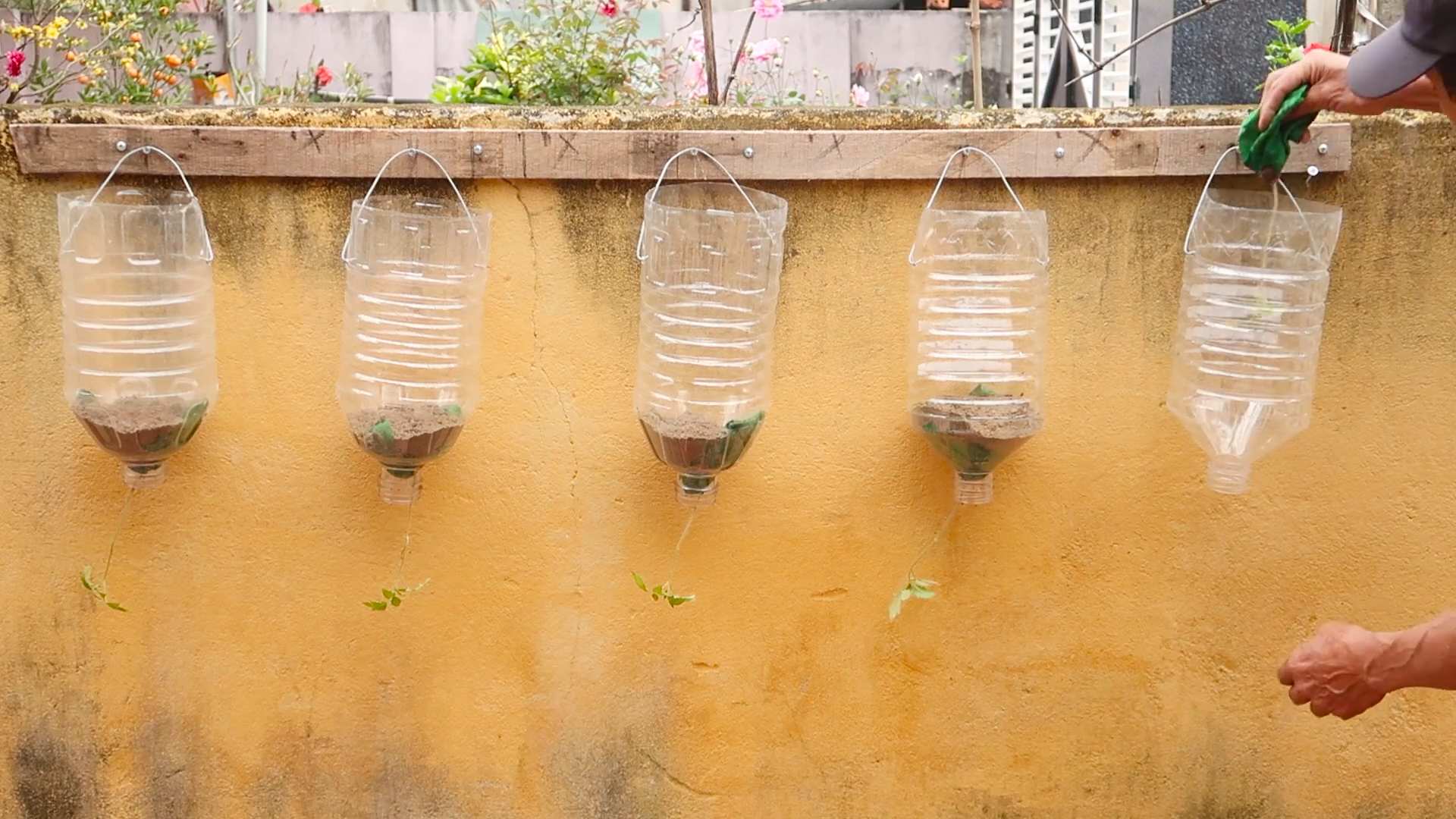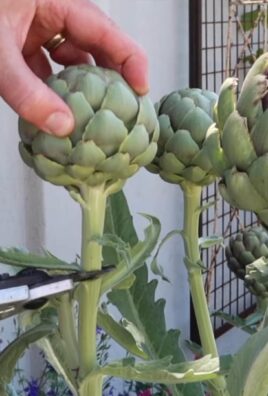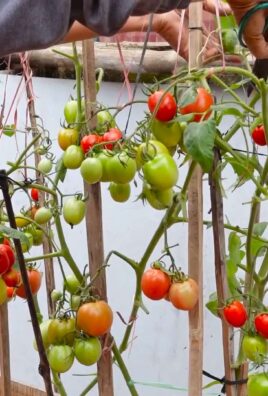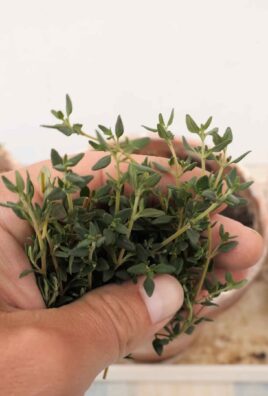Grow tomatoes indoors? Absolutely! Imagine plucking a sun-ripened, juicy tomato right from your kitchen windowsill in the dead of winter. Sounds like a dream, right? Well, it doesn’t have to be! For centuries, humans have sought ways to extend the growing season, from ancient Roman greenhouses to the ingenious methods developed in colder climates. Now, with a few simple tricks and a little DIY spirit, you too can enjoy the taste of summer all year round.
But why bother with indoor tomato gardening? Well, for starters, it’s incredibly rewarding! There’s something truly special about nurturing a plant from seed to fruit, especially when you’re defying the limitations of the weather. Plus, you get to control the growing environment, minimizing pests and diseases. And let’s be honest, store-bought tomatoes often lack the vibrant flavor of homegrown ones. This DIY guide is your passport to a world of fresh, flavorful tomatoes, regardless of the season. I’m going to share my favorite tips and tricks to help you successfully grow tomatoes indoors, even if you don’t have a green thumb. Get ready to roll up your sleeves and embark on a delicious adventure!

Growing Tomatoes Indoors: A Comprehensive DIY Guide
Hey there, fellow gardening enthusiasts! Ever dreamt of biting into a juicy, sun-ripened tomato in the dead of winter? Well, dream no more! Growing tomatoes indoors is totally achievable, and I’m here to guide you through every step of the process. It might seem daunting, but trust me, with a little patience and the right setup, you’ll be harvesting your own homegrown goodness in no time.
Choosing the Right Tomato Variety
First things first, not all tomato varieties are created equal when it comes to indoor growing. You’ll want to opt for determinate or dwarf varieties. These are bred to stay compact and produce fruit within a shorter timeframe, making them perfect for the limited space and light conditions indoors.
Here’s a quick rundown of some excellent choices:
* Tiny Tim: These are super compact and produce adorable, bite-sized tomatoes. Great for small spaces!
* Roma: A classic paste tomato, perfect for sauces and canning. They are relatively easy to grow indoors.
* Patio: As the name suggests, these are bred for container gardening and do well indoors.
* Bush Early Girl: A reliable and early-producing variety, even indoors.
* Micro Tom: The smallest tomato variety available, ideal for tiny spaces and even windowsills.
Setting Up Your Indoor Tomato Garden
Okay, now that you’ve picked your variety, let’s get your indoor garden ready! This involves choosing the right container, soil, and most importantly, lighting.
* Containers: Choose pots that are at least 5 gallons in size. Tomatoes need room for their roots to grow. Fabric pots are a great option as they allow for better drainage and aeration.
* Soil: Don’t just grab any old dirt from your backyard! You’ll need a well-draining potting mix. Look for a mix specifically formulated for vegetables, or create your own by combining equal parts peat moss, perlite, and vermiculite.
* Lighting: This is arguably the most crucial element. Tomatoes need at least 6-8 hours of direct sunlight per day. If you don’t have a sunny south-facing window, you’ll need to invest in grow lights. LED grow lights are energy-efficient and provide the full spectrum of light that tomatoes need.
Step-by-Step Planting and Growing Guide
Alright, let’s get our hands dirty! Here’s a detailed guide to planting and nurturing your indoor tomato plants:
1. Starting Seeds (Optional): You can either start your tomatoes from seeds or purchase seedlings from a local nursery. If you’re starting from seeds, sow them in seed-starting trays about 6-8 weeks before you want to transplant them into their final containers. Use a seed-starting mix and keep the soil consistently moist. Place the trays under grow lights or in a warm, sunny spot. Once the seedlings have developed a few sets of true leaves, they’re ready to be transplanted.
2. Transplanting Seedlings: Fill your chosen container with the potting mix, leaving a few inches of space at the top. Gently remove the seedling from its tray, being careful not to damage the roots. Create a hole in the center of the potting mix and place the seedling in the hole. Backfill with potting mix and gently pat down the soil. Water thoroughly.
3. Providing Support: As your tomato plants grow, they’ll need support to prevent them from toppling over. Use stakes, cages, or trellises to provide support. Insert the support structure into the pot when you transplant the seedling to avoid damaging the roots later.
4. Watering: Water your tomato plants regularly, keeping the soil consistently moist but not waterlogged. Check the soil moisture by sticking your finger about an inch deep into the soil. If it feels dry, it’s time to water. Water at the base of the plant to avoid wetting the leaves, which can lead to fungal diseases.
5. Fertilizing: Tomatoes are heavy feeders, so you’ll need to fertilize them regularly. Use a balanced liquid fertilizer, such as a 10-10-10 or 5-10-5, diluted to half strength. Fertilize every 2-3 weeks, following the instructions on the fertilizer label.
6. Pruning: Pruning is essential for indoor tomato plants. Remove suckers, which are the small shoots that grow between the main stem and the branches. These suckers will steal energy from the plant and reduce fruit production. Also, remove any yellowing or dead leaves.
7. Pollination: Since you don’t have bees buzzing around indoors, you’ll need to hand-pollinate your tomato plants. This is easy to do. Simply use a small paintbrush or cotton swab to gently transfer pollen from one flower to another. You can also gently shake the plant to release pollen. Do this every day or two when the flowers are open.
8. Monitoring for Pests and Diseases: Keep a close eye on your tomato plants for any signs of pests or diseases. Common pests include aphids, whiteflies, and spider mites. Treat infestations with insecticidal soap or neem oil. Common diseases include fungal diseases like early blight and powdery mildew. Prevent these diseases by providing good air circulation and avoiding wetting the leaves when watering. If you spot any signs of disease, remove the affected leaves and treat the plant with a fungicide.
Troubleshooting Common Issues
Even with the best care, you might encounter some challenges along the way. Here are some common issues and how to address them:
* Blossom End Rot: This is a common problem where the bottom of the tomato develops a dark, leathery spot. It’s caused by a calcium deficiency. To prevent blossom end rot, ensure your soil is rich in calcium and water your plants consistently. You can also add calcium supplements to the soil.
* Yellowing Leaves: Yellowing leaves can be caused by a variety of factors, including overwatering, underwatering, nutrient deficiencies, or pests. Check the soil moisture and adjust your watering accordingly. Fertilize your plants regularly to provide them with the nutrients they need. Inspect the leaves for signs of pests.
* Lack of Fruit Production: If your tomato plants are growing well but not producing fruit, it could be due to insufficient light, poor pollination, or extreme temperatures. Ensure your plants are getting enough light and hand-pollinate them regularly. Maintain a consistent temperature between 65-80°F.
Harvesting Your Tomatoes
The moment you’ve been waiting for! Your tomatoes are ready to harvest when they are fully colored and slightly soft to the touch. Gently twist the tomato off the vine. Enjoy your homegrown tomatoes in salads, sandwiches, sauces, or simply eat them fresh off the vine!
Extra Tips for Success
* Rotate your plants: Give your plants a quarter turn every few days to ensure even light exposure on all sides.
* Maintain humidity: Tomatoes like humidity. If your indoor air is dry, consider using a humidifier or placing a tray of water near your plants.
* Be patient: Growing tomatoes indoors takes time and effort. Don’t get discouraged if you don’t see results immediately. With consistent care, you’ll be rewarded with delicious, homegrown tomatoes.
Growing tomatoes indoors can be a rewarding experience. With the right setup, care, and a little bit of patience, you can enjoy fresh, homegrown tomatoes year-round. Happy gardening!

Conclusion
So, there you have it! Growing tomatoes indoors might seem like a daunting task, but with a little know-how and the right approach, you can enjoy fresh, homegrown tomatoes even when the weather outside is frightful. This DIY method isn’t just about saving money; it’s about connecting with your food, understanding the growing process, and experiencing the unparalleled satisfaction of harvesting something you nurtured from seed to fruit.
Why is this a must-try? Because it empowers you to control the entire growing environment. You dictate the light, the temperature, the humidity, and the nutrients, eliminating many of the variables that can plague outdoor tomato gardens. No more worrying about unexpected frosts, ravenous pests, or inconsistent rainfall. You’re in charge! Plus, imagine the bragging rights when you serve a salad made with tomatoes you grew yourself in the middle of winter.
But don’t stop there! Experiment with different varieties of tomatoes. Cherry tomatoes and dwarf varieties are particularly well-suited for indoor growing. Try different potting mixes to see what works best for your setup. Some gardeners swear by a mix of peat moss, perlite, and vermiculite, while others prefer a soilless mix. You can also explore different lighting options. While LED grow lights are highly recommended, you might find that a combination of natural sunlight and supplemental lighting works best for your space. Consider adding companion plants like basil or marigolds to your indoor tomato garden. These plants can help deter pests and even improve the flavor of your tomatoes.
Don’t be afraid to tweak the method to suit your specific needs and preferences. The key is to observe your plants closely and adjust your approach as needed. Are the leaves turning yellow? They might need more nutrients. Are the stems leggy? They probably need more light. Growing tomatoes indoors is a learning process, so embrace the challenges and celebrate the successes.
We wholeheartedly encourage you to give this DIY trick a try. It’s a rewarding experience that will not only provide you with delicious tomatoes but also deepen your appreciation for the natural world. And most importantly, we want to hear about your experience! Share your tips, tricks, and triumphs in the comments below. Let’s build a community of indoor tomato growers and learn from each other. Did you find a particular variety that thrives indoors? Did you discover a secret to preventing blossom end rot? Share your knowledge and help others succeed. Your insights could be invaluable to someone just starting out. So, get your hands dirty, plant those seeds, and get ready to enjoy the taste of summer all year round. This method for growing tomatoes indoors is a game changer.
FAQ
Q: What are the best tomato varieties to grow indoors?
A: While you can technically grow any tomato variety indoors, some are better suited than others. Dwarf and determinate varieties, which are naturally smaller and bushier, tend to thrive in containers. Cherry tomatoes, grape tomatoes, and Roma tomatoes are also popular choices. Some specific varieties to consider include ‘Tiny Tim,’ ‘Patio,’ ‘Roma,’ ‘Celebrity,’ and ‘Better Bush.’ Be sure to check the plant’s mature size and light requirements before selecting a variety.
Q: What kind of lighting do I need to grow tomatoes indoors?
A: Adequate lighting is crucial for successful indoor tomato growing. Tomatoes need at least 6-8 hours of direct sunlight per day, but most indoor spaces don’t provide that naturally. Therefore, you’ll likely need to supplement with artificial lighting. LED grow lights are the most energy-efficient and effective option. Look for lights that provide a full spectrum of light, including both red and blue wavelengths. You can also use fluorescent grow lights, but they are less energy-efficient and may need to be replaced more frequently. Position the lights close to the plants (but not so close that they burn the leaves) and adjust the height as the plants grow.
Q: What kind of soil should I use for indoor tomatoes?
A: The right soil is essential for healthy tomato growth. Avoid using garden soil, as it can be too heavy and may contain pests or diseases. Instead, opt for a well-draining potting mix specifically formulated for containers. You can also create your own mix by combining equal parts peat moss, perlite, and vermiculite. Some gardeners also add compost or aged manure to provide extra nutrients. Make sure the soil is loose and airy to allow for good root development.
Q: How often should I water my indoor tomato plants?
A: Watering frequency will depend on several factors, including the size of the pot, the type of soil, and the temperature and humidity of your indoor environment. As a general rule, water your tomato plants when the top inch of soil feels dry to the touch. Water deeply, until water drains out of the bottom of the pot. Avoid overwatering, as this can lead to root rot. Also, avoid getting water on the leaves, as this can promote fungal diseases.
Q: How do I pollinate my indoor tomato plants?
A: Tomatoes are self-pollinating, but they often need a little help indoors, where there are no bees or wind to assist. You can hand-pollinate your tomato plants by gently shaking the flowers or using a small brush to transfer pollen from one flower to another. You can also use a small fan to create a gentle breeze that will help distribute the pollen. Pollinating during the warmest part of the day, when the pollen is dry and easily released, is best.
Q: How do I fertilize my indoor tomato plants?
A: Tomatoes are heavy feeders and need regular fertilization to produce abundant fruit. Start fertilizing your plants a few weeks after transplanting them into their final pots. Use a balanced fertilizer specifically formulated for tomatoes, following the instructions on the label. You can also use organic fertilizers, such as compost tea or fish emulsion. Fertilize every 2-3 weeks during the growing season.
Q: What are some common problems that affect indoor tomato plants?
A: Some common problems that can affect indoor tomato plants include blossom end rot, aphids, whiteflies, and fungal diseases. Blossom end rot is caused by a calcium deficiency and can be prevented by ensuring that your plants receive adequate calcium and consistent watering. Aphids and whiteflies can be controlled with insecticidal soap or neem oil. Fungal diseases can be prevented by providing good air circulation and avoiding getting water on the leaves.
Q: How long does it take to grow tomatoes indoors?
A: The time it takes to grow tomatoes indoors will depend on the variety you’re growing and the growing conditions. Generally, it takes about 60-80 days from transplanting to harvest. Cherry tomatoes tend to ripen faster than larger varieties. Be patient and monitor your plants closely. You’ll know the tomatoes are ripe when they are fully colored and slightly soft to the touch.
Q: Can I grow tomatoes indoors year-round?
A: Yes, you can grow tomatoes indoors year-round, provided you have adequate lighting and temperature control. You may need to adjust your growing practices depending on the season. For example, you may need to provide more supplemental lighting during the winter months.
Q: What size pot should I use for growing tomatoes indoors?
A: The size of the pot will depend on the variety of tomato you are growing. For dwarf or determinate varieties, a 5-gallon pot is usually sufficient. For larger, indeterminate varieties, you’ll need a 10-gallon or larger pot. Make sure the pot has drainage holes to prevent waterlogging.





Leave a Comment